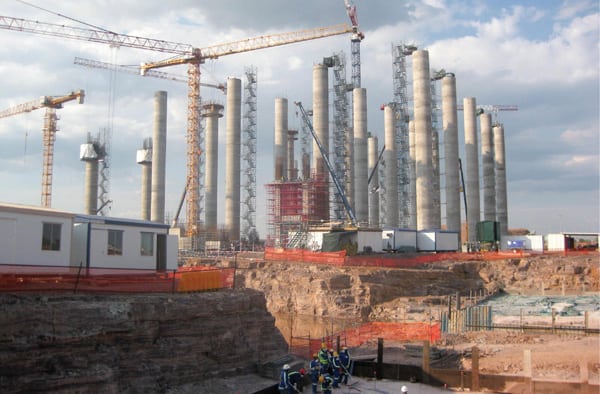Is Eskom Ready for the World Cup?
The FIFA World Cup, the biggest sports event on the planet, is under way in South Africa through July 11. More than 300,000 fans are expected to attend the global soccer tournament, and hundreds of millions more will be watching on television. But a focus will also be on South Africa itself, which 20 years ago ended apartheid and has spent the following decades in a recovery process. And the pressure is on for Eskom, South Africa’s state-owned utility, which generates nearly 95% of the nation’s power (and 45% of Africa’s total).
The continent’s most robust economy was in dire straits in early 2008, when gripped by a power crisis that forced major metal mines to close and sent South Africa’s gross domestic product into a downward spiral. Blaming the crisis on rising electricity demand and a lack of investment in new capacity that resulted from years of neglect, the utility has since recommissioned mothballed power plants and launched a massive power expansion program. (See “Whistling in the Dark: Inside South Africa’s Power Crisis” in our Nov. 2008 issue.) The first new power plants are not expected to come online until 2012 (Figure 1), however.
 |
| 1. When it rains, it will pour. The six units at Eskom’s 4,800-MW Medupi coal-fired power plant, under construction in Lephalale, are expected to come online between 2012 and 2015. The project, with a name that means “rain that soaks parched lands, giving economic relief,” will include South Africa’s first supercritical plant. A similar 4,800-MW coal-fired plant, the Kusile, is also under construction in Lephalale, with the first unit expected to come online in 2014. That plant will be South Africa’s first plant to install flue gas desulfurization. Courtesy: Eskom |
Despite internal audits and simulations to test its readiness for the World Cup—including an independent review conducted by the Korean Electricity Power Corp. (Korea and Japan co-hosted the 2002 World Cup)—Eskom remains wary about supply, admitting that the country’s reserve margin is not as wide as it would like.
Just a month before the tournament began, the utility warned that, though it did not foresee any blackouts, “cold winter temperatures combined with high electricity demand” could place additional pressure on the system. Consumers should also be on the alert, it said, introducing a warning system on public television channels where a referee holds up colored cards that indicate the power situation. The utility even went so far as to suggest that South Africans could be asked to turn everything off but one TV and one light during the tournament if the system were under pressure.
According to Eskom, demand is expected to peak at 37.2 GW, with an increase of only 275 MW anticipated from the World Cup, based on studies conducted in Germany during the last World Cup, in 2006.
The utility has gone to extraordinary measures to ensure supply: It said that game broadcasts will be powered by diesel generators to avoid any disruptions, while uninterrupted power supply units will back up the lighting at the stadiums. As well as pledging that “only critical maintenance” would take place over the period of the World Cup, Eskom has reportedly secured supply of around 42 GW for the event, including its own capacity, by reducing exports and increasing imports, mainly from Mozambique’s Cahora Bassa dam. Demand reduction commitments from big industrial consumers have also been obtained. Worst case scenarios would prompt the utility to activate open-cycle gas turbines, which could supply an additional 2,000 MW.
In June, meanwhile, at a presentation pinpointing the utility’s status on its path to recovery, Eskom Acting Chairman Mpho Makwana said the utility was determined to “shine again, not just survive.” Makwana pointed out that despite being tight, the power system had performed reasonably well, with no load shedding since May 2008. To increase capacity, Eskom has added 450 MW (mainly from independent power producers) and added new transmission lines, and it is on schedule—though not on budget—to increase capacity by 12 GW by 2017.
Perhaps more telling of the utility’s status is that the World Bank and other organizations had loaned it R68 billion (US$8.76 billion) for its new coal plants and renewable projects. And the utility actually pulled itself out of the red, from a record loss of R9.7 billion in 2009 to a net profit of R3.6 billion in fiscal year 2010. The gains were mainly from an increase in tariffs granted by the national energy regulatory authority, Makwana said.